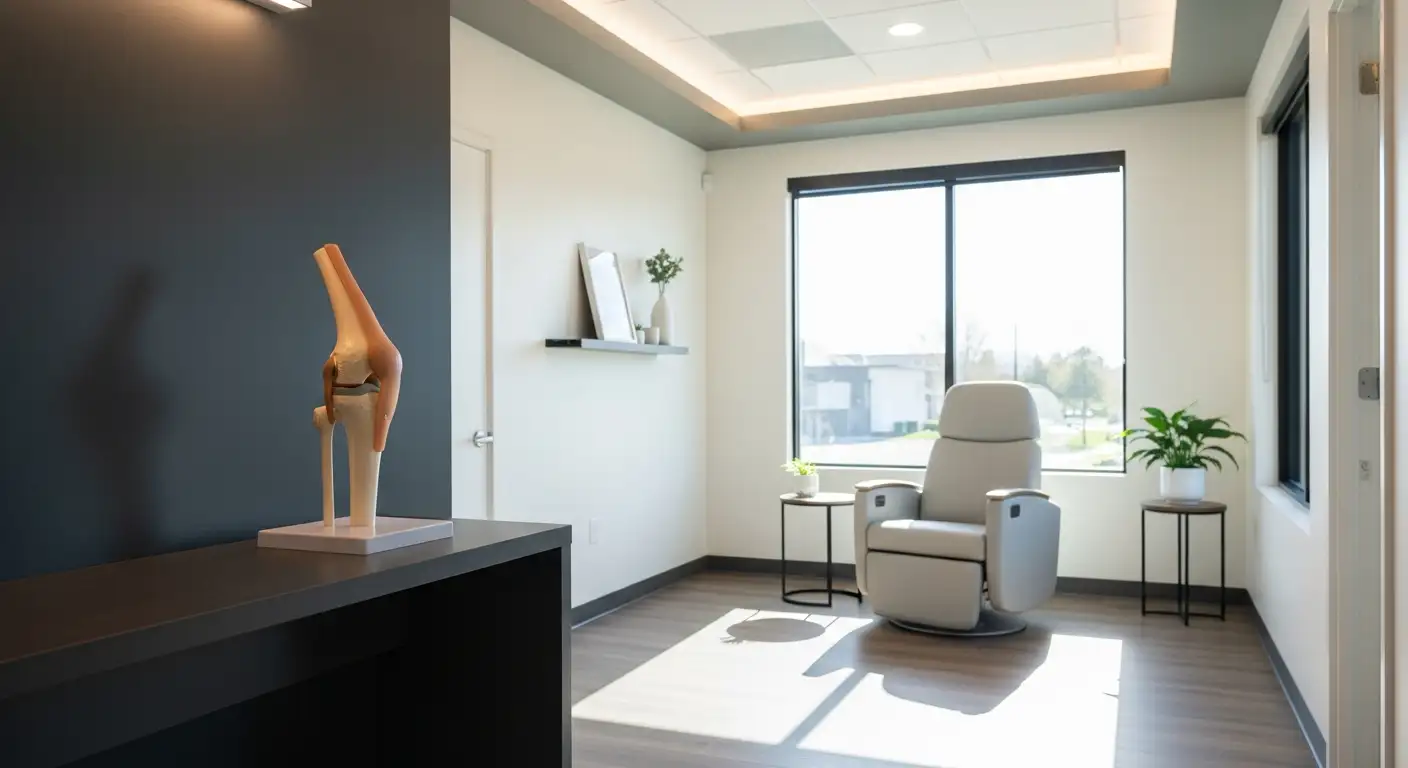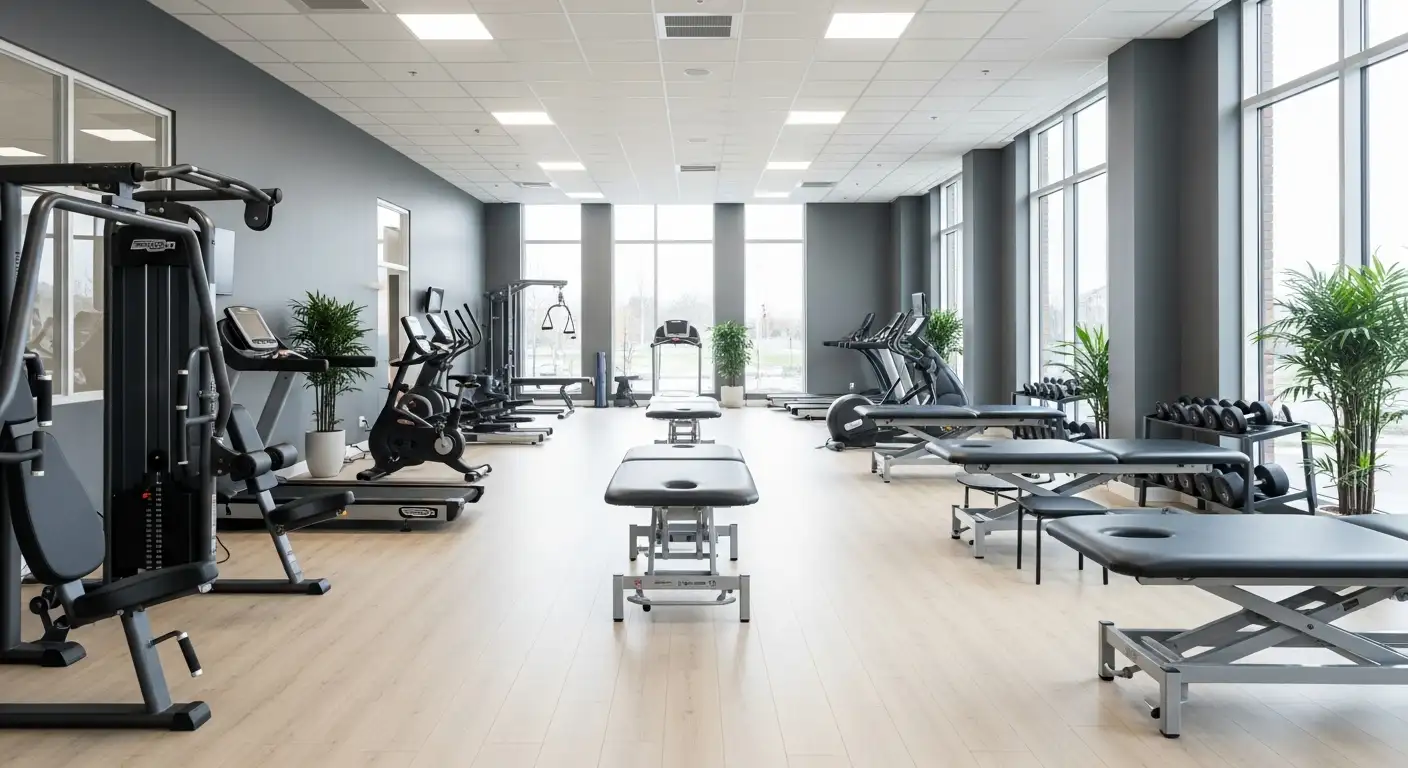Understanding Nerve Pain After Surgery
Nerve pain after total knee replacement surgery can be a challenging side effect for patients, often leading to questions about its duration and how to manage it. In this section, we will delve into strategies to manage this pain and understand the risk factors for nerve injury post-surgery.

Management Strategies for Nerve Pain
Nerve pain and discomfort post total knee replacement surgery can be managed and potentially relieved through a few simple strategies. These strategies can speed up the healing process and potentially reduce the duration of pain.
These include:
- Regular and guided physical therapy
- Usage of cold packs to soothe inflammation
- Anti-inflammatory medication
- Pain control techniques such as nerve blocks or pain pumps
- Gentle exercises to improve strength and mobility (Stone Clinic)
It's important to consult with a healthcare professional before starting any pain management regimen as everyone's situation and tolerance levels are different.
Risk Factors for Nerve Injury
While the reported incidence of nerve injury following total knee arthroplasty (TKA) ranges from 0.3% to 1.3%, there are certain risk factors that may increase the likelihood of nerve damage.
These include:
- Being female
- History of lumbar pathology
- Lower tourniquet pressure (less than 300 mmHg)
- Longer duration of anesthesia
Interestingly, higher tourniquet pressures (300-349 mmHg and 350 mmHg or greater) were found to be associated with a lower risk of postoperative nerve injury after TKA.
Understanding these risk factors can help patients and healthcare professionals take preventative measures to minimize the risk of nerve injury following a total knee replacement surgery.
Duration and Prevalence of Nerve Pain
When it comes to understanding the duration and prevalence of nerve pain post total knee replacement, it's important to note that individual experiences can vary significantly. Some patients experience relief within a few weeks, while others may continue to experience pain for several months or even years after the surgery.
Duration of Nerve Pain Post-Surgery
The duration of nerve pain after total knee replacement can vary widely based on factors like the individual's overall health, the extent of the damage that required the replacement, and how well the surgery was performed. Post-surgery, nerve pain and discomfort can be managed and potentially relieved through simple strategies, potentially speeding up the healing process and reducing the duration of pain [2].
Patients with persistent nerve pain can experience severe pain intensity even 1.5 to 3.5 years after surgery.
Prevalence of Persistent Pain
The prevalence of persistent post-surgical pain (PPSP) and neuropathic pain (NP) varies among different studies. According to a study by NCBI, PPSP ranges from 16% to 39% at 6 months post-operatively, and from 13.1% to 23% at 12 months post-operatively. NP at 6 months post-operatively is found in 5.2% to 13% of patients.
In another study, around 20% of patients experience persistent pain after knee replacement surgery, with 11% of those suffering from nerve pain that peaks within the 6-week to 3-month period after surgery [3].
In patients with knee osteoarthritis who undergo knee replacement surgery, about 13-14% experience persistent nerve pain even 6 months after the surgery.
These numbers underscore the significant number of patients who face ongoing nerve pain after knee replacement surgery, highlighting the importance of proper pain management strategies and rehabilitation exercises.
Causes of Nerve Pain
Nerve pain following total knee replacement surgery is a common concern among patients. Understanding the causes can provide insight into how long the nerve pain may last, as well as potential strategies for managing this discomfort.
Nerve Injuries During Surgery
Nerve pain following knee surgery may be caused by nerve injuries, entrapment, or compression during the surgical procedure. These can result in symptoms such as sharp, shooting, burning pain, tingling, numbness, or weakness.
During a surgical procedure, efforts are made to avoid cutting or damaging major nerves. However, some nerves like the peroneal nerve or branches can get cut during the incision process. This can contribute to nerve-related issues post-surgery.
Tourniquet pressure and the duration of anesthesia have been identified as risk factors for nerve injury following total knee arthroplasty (TKA) [1].
Types of Nerve Damage
Different types of nerve damage can occur during a total knee replacement surgery:
- Damage to the infrapatellar branch of the saphenous nerve (IPBSN) can lead to numbness or a painful neuroma in the knee, with symptoms that may progress slowly and intensify over time [4].
- The peroneal nerve can also be damaged due to its proximity to the fibula bone. This can cause persistent lateral knee pain and loss of function in the foot or toes. However, these symptoms may be alleviated through surgical decompression of the nerve [4].
- Nerve injuries during any surgical procedure can potentially lead to the development of neuromas. These occur when regrowth of nerve tissue forms a mass of nerve fibers that can cause pain when compressed, pulled, or moved against other tissues.
Understanding the type and cause of nerve pain can help in developing a personalized approach to management and recovery. It's essential to maintain open communication with your healthcare provider and follow their guidance for the best outcomes following total knee replacement surgery.
Recovery and Healing Process
The recovery and healing process after total knee replacement surgery can be a complex journey, particularly when considering nerve pain and how it evolves over time. Understanding the symptoms of nerve recovery and the progress expected in physical therapy can help patients navigate this process more effectively.
Symptoms of Nerve Recovery
Nerve pain after knee replacement surgery is common and can manifest in several ways. As the nerves awaken and heal from the surgery, patients may experience numbness, hypersensitivity to touch, tingling, electric zings, burning, and pins and needles sensations. Some may also experience a wide "band" sensation around the knee and pain or numbness when kneeling [5].
While these symptoms might be unsettling, they are often signs of nerve recovery. However, nerve pain persisting beyond six months after the procedure could indicate chronic, refractory, neuropathic pain, a problem beyond typical postoperative pain.
Progress in Physical Therapy
Physical therapy is an integral part of the recovery process after total knee replacement surgery. As patients progress in their therapy, they may experience similar sensations of tingling, burning, electric zings, and pins and needles around the knee. These are indicators of nerve recovery and healing from the surgical procedure.
Progress in physical therapy is typically measured by the patient's ability to perform and improve on various exercises and movements. These can include flexing and extending the knee, walking with assistance, and eventually transitioning to walking independently. The goal is to restore function and mobility to the knee, while managing and reducing nerve pain.
It's important to remember that each patient's recovery timeline will vary based on individual factors such as age, general health, and the specifics of their surgery. Regular communication with the healthcare team, including the physical therapist, can help in effectively managing expectations and addressing any concerns related to nerve pain and recovery.
Pain Management Strategies
Dealing with nerve pain after a total knee replacement can be challenging. However, there are various strategies available that can help manage the discomfort and facilitate recovery.
Medication Options
In the immediate aftermath of surgery, opioid pain medicine may be used to manage short-term or sudden pain. However, as part of a comprehensive pain management plan, the goal is to transition to non-opioid pain medicines as soon as possible during the recovery process.
This can also include the use of NSAIDs or COX-2-specific inhibitors administered preoperatively or intra-operatively, and continued postoperatively. These medicines have been recommended for pain management after unilateral, primary total knee arthroplasty [7].
Alternative Treatments
Beyond traditional medication, various alternative treatments can help relieve pain and discomfort after knee replacement surgery. These include:
- Aromatherapy: The use of essential oils can provide a sense of calm and relaxation, aiding in pain relief.
- Activity: Light physical activity can help promote blood circulation and hasten recovery.
- Massage: Gentle massage around the affected area can help alleviate pain and tension.
- Cold Therapy: Using ice packs or frozen gel packs can help reduce discomfort and swelling by numbing nerve endings, providing relief for postoperative pain [6].
- Breathing Exercises: Controlled breathing exercises can help manage pain and promote relaxation.
- Environmental Changes: Adjusting the surrounding environment to be more comfortable and supportive can aid in recovery.
- Rest and Positioning: Changing positions frequently while in bed, resting when needed, and pacing activities with proper rest are essential for managing pain after knee replacement surgery, allowing for a balance between activity and recovery.
Each of these alternative treatments can be tailored to the individual's needs and preferences, offering a holistic approach to managing nerve pain after total knee replacement. It's advisable to consult with healthcare providers to determine the best combination of pain management strategies for individual cases.
Exercise and Rehabilitation
Exercise and rehabilitation play a critical role in managing nerve pain after total knee replacement and speeding up the recovery process. By engaging in specific exercises post-operation, patients can strengthen their muscles, increase circulation, and improve knee movement, all of which contribute to diminishing nerve pain.
Early Post-Op Exercises
Performing exercises shortly after surgery may initially be uncomfortable, but it can speed up recovery. Patients are often encouraged to begin with gentle exercises to promote blood circulation and enhance knee mobility.
Pain or swelling after exercise or activity can be relieved by elevating the leg and applying ice wrapped in a towel. The ice should be placed on the knee for 20 minutes and then removed for 20 minutes, with this sequence repeated for about 2 hours.
It's important to remember that full recovery after knee replacement surgery can take several months due to the pain experienced before surgery, as well as the postoperative pain and swelling that weaken the knee.
Resistance and Cycling Exercises
About 4 to 6 weeks after surgery, patients can usually begin resistance exercises using light weights around the ankle. It's suggested to start with 1- to 2-pound weights and gradually increase the weight as strength returns. Ankle weights with Velcro straps are recommended for these exercises.
Alongside resistance training, cycling is also an excellent activity to regain muscle strength and knee mobility. Regular exercise, including cycling, can help in the recovery after total knee replacement surgery [8].
By integrating these exercises into their rehabilitation plan, patients can manage their post-operative nerve pain effectively and make strides towards a complete recovery. Remember, the key to successful recovery lies in patience and consistent effort.
References
[1]: https://www.ncbi.nlm.nih.gov/pmc/articles/PMC5951729/
[2]: https://www.stoneclinic.com/blog/top-five-ways-post-op-knee-pain
[3]: https://curovate.com/blog/nerve-pain-after-knee-replacement-and-how-to-manage-it/
[4]: https://www.baltimoreperipheralnervepain.com/blog/knee-pain-after-surgery.cfm
[5]: https://www.osc-ortho.com/blog/nerve-pain-after-knee-replacement-surgery/
[6]: https://www.allinahealth.org/health-conditions-and-treatments/health-library/patient-education/total-knee-replacement/surgery-and-beyond/how-to-manage-your-pain
[7]: https://www.ncbi.nlm.nih.gov/pmc/articles/PMC9891300/
[8]: https://orthoinfo.aaos.org/en/recovery/total-knee-replacement-exercise-guide/





